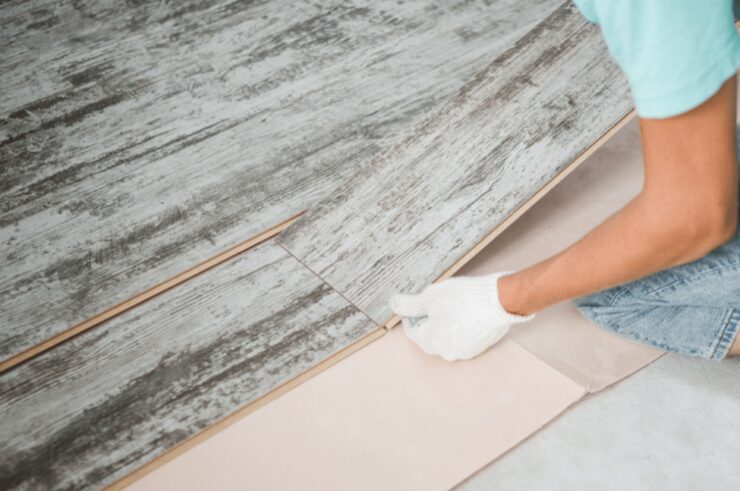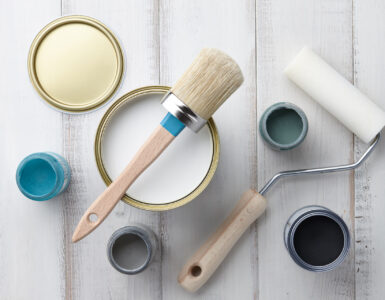On average, sellers will see about a seventy percent return on investment when they install new flooring before making the sale. In other words, investing in new residential flooring is a cost-effective way to raise your property value.
Deciding on what flooring to use, however, can seem tricky. When you start looking for tips on the best flooring options, you’re likely to run into some myths that could steer you in the wrong direction.
We’re here to talk about some of the most common residential flooring myths circulating the internet right now.
Join us as we debunk the residential flooring myths that smart homeowners should know the truth about.
Myth 1: Wood Flooring Doesn’t Last
Exposed wood flooring is one of the most timeless residential flooring options there is. You’ll often hear people saying that if you want to redo your flooring before selling your house, wood flooring is the way to go because of its universal appeal.
Yet, you’ll also hear some people pushing back against the wood flooring trend. Why? They claim that wood flooring is difficult to maintain and therefore requires repairs or replacement after a short period of time.
The truth is that there are some good rules to follow when it comes to maintaining a wood floor. For example, using a vacuum without a beater bar is preferable. Avoiding wet or steam mops is also an important part of maintaining the finish and avoiding warping.
Other than that, wood floors are not hard to maintain. The best thing you can do is clean up spills and messes ASAP and sweep or vacuum once a week. Doing so will keep wood floors in great shape for years to come.
Myth 2: Carpeting Is Bad for Indoor Air Quality
Carpeting has received a bad reputation in the past ten or twenty years. What started with a shift away from certain outdated styles of carpeting became a full-on crusade against carpeting, as a whole. Why did this happen?
Many people worry that carpeting can worsen your indoor air quality by trapping dust and other allergens. Poor indoor air quality does tend to cause problems for individuals with allergies, asthma, or other respiratory problems.
However, dust and allergens can settle onto any flooring surface. Installing new carpeting and vacuuming it once a week should allow you to enjoy your carpeting without experiencing an adverse reaction.
Myth 3: Laminate Makes Your Home Look Cheap
There was a time when laminate was a cheap residential flooring option that did look cheap. However, the prevailing belief that laminate looks cheap is actually outdated, coming from individuals who haven’t seen the progress the flooring industry has made with laminate options.
Today, laminate is the primary material used to create engineered wood flooring. Engineered wood comes in a wood variety of options and, when you choose the right manufacturer, looks like the real deal.
Bonus Myth: Engineered Wood Is Inferior to the Real Deal
In a world of inferior substitutes, it’s natural to assume that engineered wood isn’t as high in quality as real wood. However, this isn’t the case.
You can purchase engineered wood at a lower cost and expect it to last as long as real wood. In fact, engineered wood is the better option for homes built in high-humidity areas. Unlike real wood, engineered wood does not absorb moisture and will not warp or expand in a space with high humidity.
Myth 4: Concrete Flooring Only Belongs in the Garage and Basement
Concrete is an affordable and strong material that we’ve used to pave driveways and cover garage and basement floors for decades. Because concrete floors in these areas of a residence serve a practical purpose, rather than an aesthetic one, we assume that all concrete looks the same: dull, industrial, and inappropriate for indoor use.
Take a look at these residential polished concrete floors to see how far concrete flooring has come. Epoxy finishes and decorative applications turn that industrial and unattractive flooring option into something surprisingly modern and chic. If you’re looking for a residential flooring option that is outside of the norm and built to impress, consider concrete.
Myth 5: Vinyl Isn’t Durable
Vinyl flooring is a close cousin of laminate flooring and tends to carry a similar reputation. This is in large part because the vinyl flooring of the past came with a lot of issues.
Back in the day, vinyl was produced in large sheets. These sheets were then rolled out and adhered to the subfloor without much pizazz. Over time, you’d see some serious issues with vinyl flooring, including buckling, bubbling, and more.
The leaders of the flooring industry no longer rely on these large sheets of vinyl for residential purposes. You may still see them in commercial spaces, but most of the time, you won’t see them in homes.
How is vinyl flooring manufactured these days? Now, you can purchase vinyl tiles or planks that are much more durable than the vinyl of the past. Vinyl also comes in much more attractive options, as well.
In fact, some of the best vinyl flooring doesn’t look like vinyl at all. It looks like ceramic or stone–and lasts as long as the real thing.
Know the Truth When You Pick Your Residential Flooring
There are so many types of floors to choose from–and nearly as many myths about different flooring options. If you’re getting ready to invest in new residential flooring, it’s important to bust the myths and get to the truth.
In a world of information overload, don’t you want a single place to get your news, updates, and guides? Let us be that place for you! Follow us or bookmark our page to stay in the know about everything from real estate to technology.




























